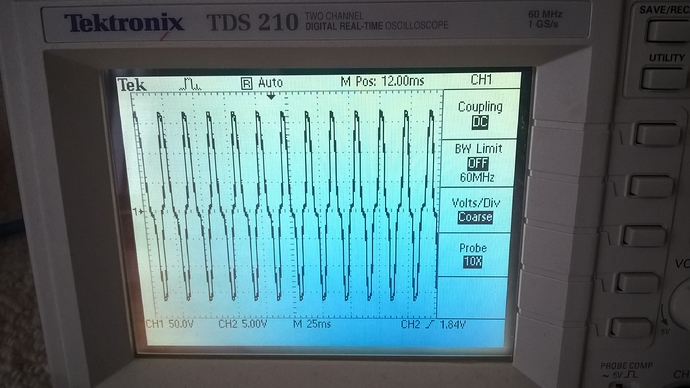Ok, sorry this is Totally off topic, but just after some general thoughts.
I know this is one of those questions that is impossible to describe in words. Appologies!
Got a situation where a project Ive heard of third hand has had a major failure and blown up several inter connected dataloggers and analogue multiplexers, that run off multiple switch mode power supplies that do NOT have their secondary output DC GRD’s commoned.
The analogue inputs to the Dataloggers are high impedance inputs, grouped in channels,but do have a max limit of ±30V DC between any pin.
My question is, (if you can picture it in your head is) if you have two switch mode power supplies lets say they are 24v DC and 30v DC supplies, where the DC GRD’s of both supplies are NOT common/linked, but they go back to high impedance input channels on a DataLogger which has a limit of max ±30V DC potential different between any input pins (eg any channel).
Is it possible the DC Grounds of either switch mode supply, could float high enough to mean they exceed the maximum voltage differential limits of the input/channels? Sorry I know this is one of those annoying stupid questions in just words!!!
But I guess the grux of what Im saying is, if you imaging two non DC GRD connected Switchmode power supplies, that do NOT have their secondary DC GRD connected to primary chassis ground for example (like PC power supplies do, which means multiple PC power supplies are common DC GRD’ed) , can the 0VDC GRD of say the 30vDC secondary output float way above the other 0VDC 12cDC secondary on the other supply? Thus causing the DC GRD connected to one channel on the datalogger being WAY above the other DC GRD of the other supply, meaning it exceeds the Max 30 V difference limitation!
The switch mode transformer in both supplies physically isolate the primary and secondary sides. Inductance between the two coils is the majority transfer of energy between the primary and secondary coils, which for analogy sake produces the output. But there would also be a capacitive transfer between the two side of the transformer which might float the DC GRD to a potential relative to the other supply?!
Can this make the DC GRD of the two supplies float to different potential IF referenced between the two 0vDC output pins on both supplies?
So between 0VDC and +12VDC or +30Vdc output the supplys, obviously the potential between 0VDc & output is +12VDc and +30VDC respectfully, but how about the potential difference between the two ‘floating’ DC 0V DC Grds, Will they float to different potentials, that if connected to a third party device like a data logger channel inputs (bunch of OpAmps and A/D converters basically) could be a over voltage issue ???
wow… ok said it…
